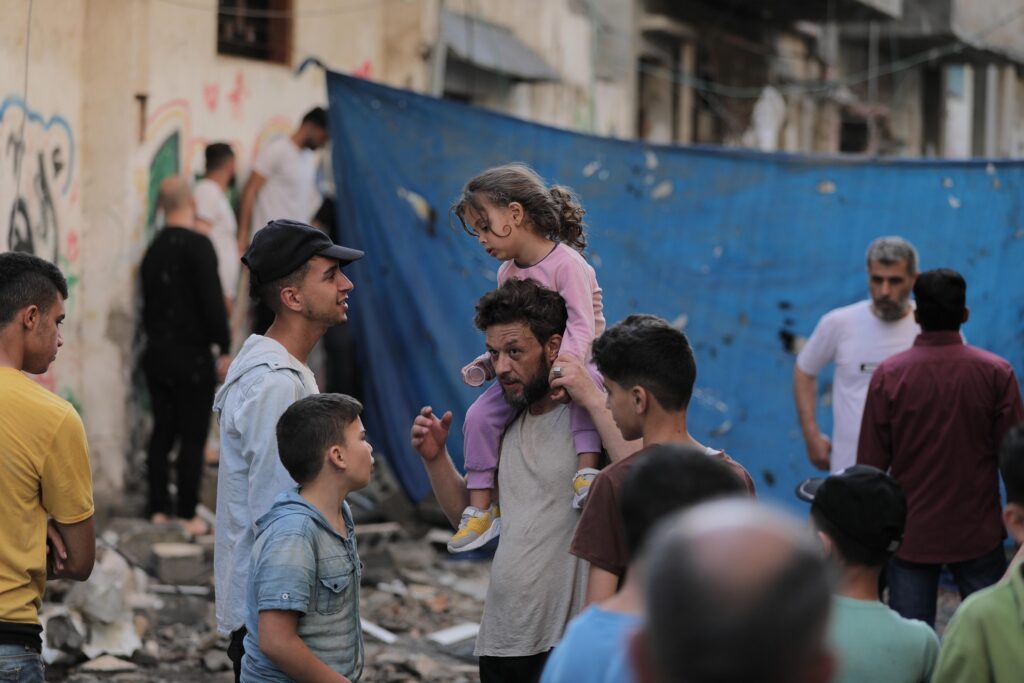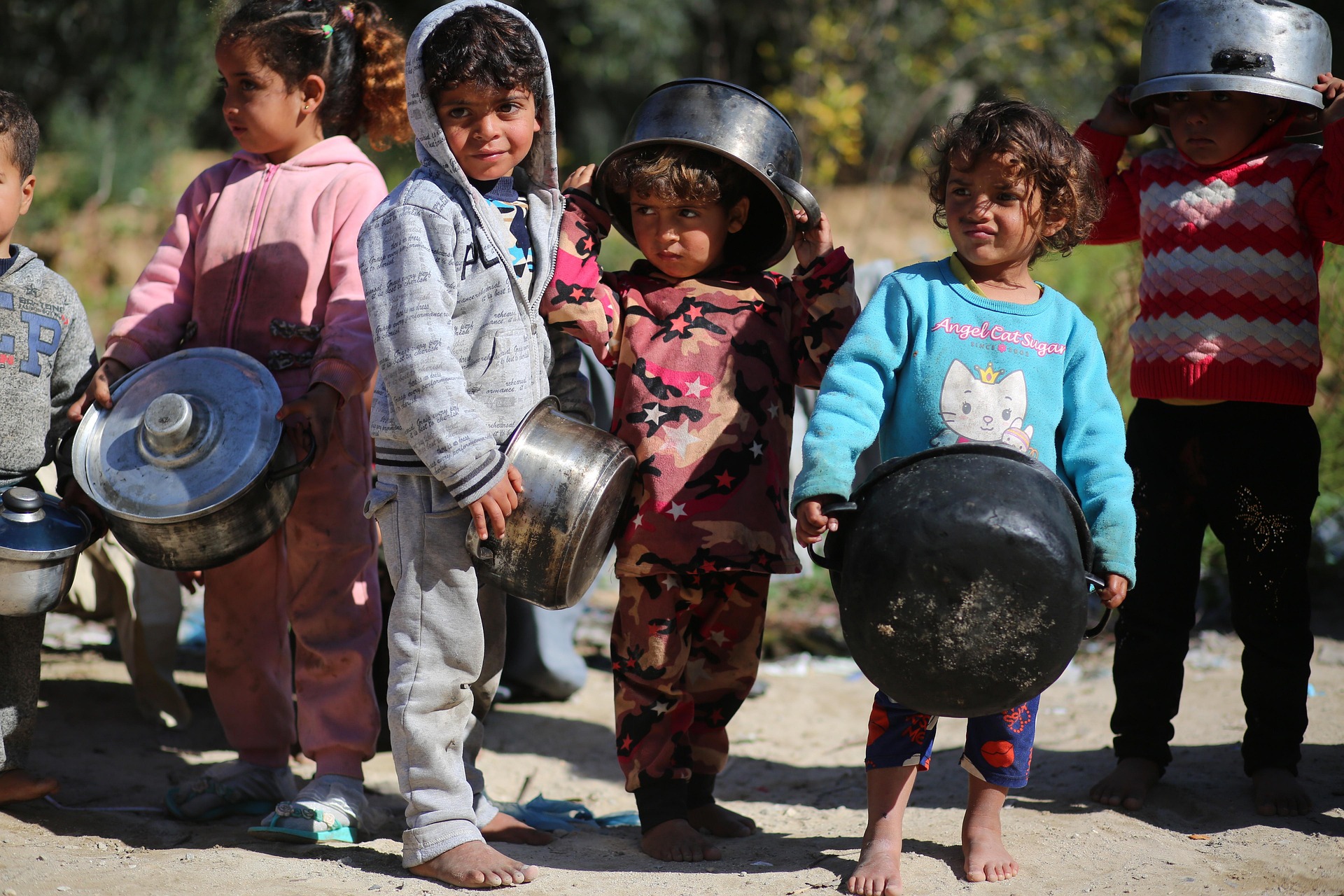The IPC has officially declared a famine in northern Gaza, marking one of the worst humanitarian crises in recent history. With over 500,000 people at risk of starvation and the entire population facing acute food insecurity, the crisis is described as entirely man-made, driven by Israeli blockades, conflict, and the collapse of essential infrastructure. This in-depth analysis explores the famine declaration, its causes, controversies over data, the scale of suffering, and global responses.
IPC Confirms Famine in Northern Gaza
IPC Confirms Famine in Northern Gaza:The Integrated Food Security Phase Classification (IPC), a global initiative that includes UN agencies, NGOs, and governments, has officially declared a famine in northern Gaza, specifically in the Gaza Governorate. This marks a turning point in Gaza’s humanitarian crisis, as projections indicate the famine could spread to Deir al-Balah and Khan Younis governorates by September 2025. According to the IPC, over 500,000 people are at immediate risk of dying from starvation, while hundreds of thousands more face catastrophic food shortages across Gaza.
The declaration represents a major escalation from previous IPC alerts, which had repeatedly warned of the imminent risk of famine but stopped short of confirming it. With the August 2025 report, the situation has crossed all three famine thresholds, confirming the crisis as one of the most severe humanitarian disasters in modern times.
Criteria for Declaring Famine
IPC Confirms Famine in Northern Gaza:The IPC classifies famine (Phase 5) when three specific thresholds are met. The first is food consumption, where at least 20 percent of households experience an extreme lack of food, leading to starvation. The second is acute malnutrition, requiring that at least 30 percent of children aged six months to five years suffer from wasting or severe thinness for their height. The third threshold is mortality, where at least two people or four children under five die daily per 10,000 people due to starvation or malnutrition-related diseases.

According to the latest report, all three thresholds have now been met in northern Gaza based on data collected up to July 25, 2025. Food consumption and malnutrition indicators have been breached in most areas, while mortality data is now sufficient to confirm famine conditions.
Scale of the Crisis
IPC Confirms Famine in Northern Gaza:The entire population of Gaza, estimated at 2.1 to 2.3 million people, is experiencing acute food insecurity at IPC Phase 3 or worse. More than 500,000 people are currently in IPC Phase 5, characterized by starvation, destitution, and death.
In Gaza City, child malnutrition levels have surged alarmingly. Acute malnutrition among children under five rose from 4.4 percent in May to 16.5 percent by early July 2025, surpassing the famine threshold. Between April and mid-July, over 20,000 children were admitted for treatment, including 3,000 suffering from severe malnutrition. Since July 17, at least 16 children under five have died from hunger-related causes.
Food access has collapsed. One in three people in Gaza goes without food for days, while 81 percent of households in northern Gaza reported poor food consumption in July, up from just 33 percent in April. Families have resorted to extreme coping mechanisms, such as scavenging through garbage or risking their lives to access food supplies.
Aid Blockages and Conflict Impact
IPC Confirms Famine in Northern Gaza:Since March 2, 2025, an 80-day blockade has halted most humanitarian aid and commercial supplies into Gaza. More than 116,000 metric tons of food aid—enough to feed one million people for four months—remains stuck at border crossings. Israeli military operations, combined with mass displacement and the destruction of critical infrastructure, have driven the humanitarian crisis further. Approximately 800,000 people have been newly displaced since mid-May, while food systems have been decimated, with 60 percent of milk cows and 70 percent of cattle stock destroyed.
The Gaza Humanitarian Foundation, a U.S.-backed aid system, has faced criticism for chaotic distribution, with many unable to access food due to militarized zones and the lack of cooking resources.
A Man-Made Catastrophe
IPC Confirms Famine in Northern Gaza:UN officials and the IPC describe the famine as entirely man-made, attributing it primarily to Israeli restrictions on aid and the deliberate destruction of Gaza’s food systems. UN Secretary-General António Guterres condemned the situation as a “humanitarian catastrophe of epic proportions,” calling for urgent international action.
The roots of the famine lie in the ongoing Israel-Hamas conflict, triggered by Hamas’s October 7, 2023 attack on southern Israel, which killed about 1,200 people and resulted in 250 hostages. Israel’s military campaign and blockade since then have resulted in over 60,000 Palestinian deaths, according to Gaza’s health ministry. Previous IPC reports in December 2023, March 2024, and May 2025 had warned of famine risks, particularly in northern Gaza. The August 2025 declaration now confirms these warnings.
Controversy Over Metrics
IPC Confirms Famine in Northern Gaza:The IPC’s decision has sparked criticism. Israel’s Foreign Ministry and some analysts claim the IPC lowered its famine threshold for Gaza by shifting from traditional height-weight malnutrition measures to mid-upper arm circumference (MUAC), effectively reducing the threshold from 30 percent to 15 percent. Critics argue this adjustment was politically motivated to declare famine in Gaza.
Israel also claims that over 100,000 aid trucks have entered Gaza, that food is available, and that Hamas exaggerates death figures. However, UN agencies counter that while aid may technically enter, distribution is severely hampered by Israeli military restrictions, looting, and unsafe conditions. The UN’s documentation of child deaths is based on hospital records, while Israel’s assertions lack transparent verification.
Humanitarian Challenges
IPC Confirms Famine in Northern Gaza:Humanitarian agencies face enormous challenges in reaching Gaza’s most vulnerable populations. Attacks on aid convoys, including the February 2024 “flour massacre,” have left only nine World Food Programme convoys able to reach northern Gaza in 2025. Infrastructure collapse has worsened the crisis, as hospitals, water systems, and agriculture are nearly non-functional. Repeated forced displacements since May 2025 have further disrupted access to resources and healthcare.
Calls for Action and International Responses
IPC Confirms Famine in Northern Gaza:The IPC, WFP, UNICEF, and FAO have jointly called for an immediate and sustained ceasefire to allow safe aid delivery. They emphasize the urgent need for at least 62,000 tons of food and nutrition aid per month, alongside the restoration of commercial food imports such as fruits, dairy, and proteins. They also demand rebuilding of essential services like health, water, sanitation, and energy systems, and the protection of civilians, humanitarian workers, and infrastructure.
The international response has been divided. Former U.S. President Donald Trump acknowledged “real starvation” in Gaza and proposed U.S.-backed food centers, contradicting Israel’s position. Vice President JD Vance urged Israel to allow more aid into the region. Israel continues to deny famine, accusing the IPC of relying on unreliable sources and claiming Hamas manipulates data. Israel has pointed to measures such as daily military pauses and airdrops as evidence that starvation is not occurring, but UN agencies dismiss these actions as insufficient.
Global outrage is growing. Images of starving children have triggered protests worldwide and renewed calls for the recognition of a Palestinian state. Experts such as famine scholar Alex de Waal argue that Gaza’s situation fits broader definitions of famine as a process of intensifying food crisis, regardless of the debate over adjusted metrics. Mercy Corps’ Tjada D’Oyen McKenna described the situation as entirely preventable, blaming deliberate restrictions and infrastructure destruction.
A Critical Perspective
IPC Confirms Famine in Northern Gaza:The famine in Gaza is both a humanitarian emergency and a political crisis. While the IPC’s declaration is grounded in alarming data, the adjustment of its metrics raises important questions about methodology and credibility. Israel’s counterclaims about aid trucks and food availability highlight the need for independent, transparent data from all sides.IPC Confirms Famine in Northern Gaza
Ultimately, however, the human suffering is undeniable. Whether attributed to deliberate policies, conflict, or governance failures, the famine in Gaza is man-made and preventable. The international community now faces a critical test: to move beyond political debates and act decisively to save lives before the crisis spreads further south.IPC Confirms Famine in Northern Gaza

